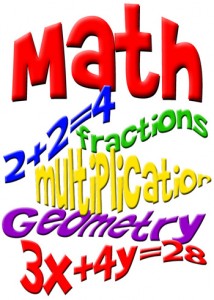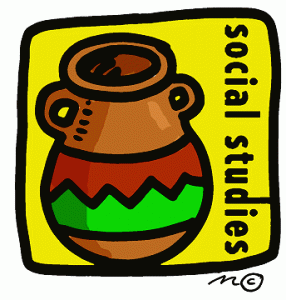Examine the following videos demonstrating ways to maintain student attention. Can you identify which of the device were used by the teacher in the lessons? Please select one of the clips below and discuss what teaching techniques are used in the videos.
Reminder of some of the methods to focus and maintain student attention are:
1) Signals
2) Movement
3) Variety
4) Interest
5) Questioning
Interesting Lessons by Subjects:
English:
Math:

Image obtained from http://images.clipartof.com/small/230369-Royalty-Free-RF-Clipart-Illustration-Of-Diverse-School-Kids-In-Science-Class.jpg
Science:
Lady Gaga Scientific Method Song Here are the Lyrics
Social Studies:
Now it is your turn. Do you know any interesting lessons that you would like to share? Comment below.





I have just shared the ‘Q-chart’ format to the students I teach, in order to get them to think about how they frame questions. This framework will help them take their questions, and answers, to the next level, I hope. I’ll attach it to a discussion thread in our discussion forum for this week’s symposium so you can all see what it looks like.
Awesome Helen! Thanks for sharing. I often also get stuck with level 1 questioning of factual information. I think some of the standardized testing questions also needs to be adjusted so that we minimize level 1 questions and aim for higher order thinking questions. =)
I watched several of the videos but the one that stood out to me was the English writing one. It reminds me….(connections) of many strategies that I incorporate in my class. Thumb up and down means that everyone need to make a response and therefore everyone participates. This is a signal and a movement. It keeps each student on task. I also use partner share, but I call it Think, Pair and Share. It basically is the same thing. Everyone thinks, then pairs(eye to eye and knee to knee) and then students share what they were discussing. This was a well taught lesson that kept student’s interest and helped to scaffold their thinking. The line of questioning was varied and quickly paced.
Hi Leslie. I like your idea of thumbs up and down technique. It is a quick gauge of understanding, and often useful for those shy students who never wanted to indicate they are not getting the concept. Sometimes I also use the “palm of five.” I don’t recall if I got the idea somewhere or I invented it. Basically it is like thumbs up/down, a palm out with all five fingers indicate their full understanding of the concept, and if I see mainly one or two fingers or even a fist, that tells me I have to find another way to teach the concept.
For the younger kids, at the beginning of the year, I like to get the students to create 3 color cards (red, green and yellow), which students always have in their pencil box. They can hold up the cards to indicate understanding. [Red=no go, stop and review; Green=move on to the next topic; and yellow=not quite there yet, may need some help]. These cards also works during individual classwork, instead of raising their hands continuously, students can just put a red card on the corner of their table, so while the teachers are circulating, they know who needs help.
(Sometimes, teachers use the card system for behavior indication, which is not really related to CIP, but more behaviorism approach. I’ll briefly mention it here. All students start out as green card for the day next to their name (one of those pocket with enough slots for all students) , and if they misbehave, teachers will change their card to yellow, as a warning. If it goes to red, student will need to work with the teacher in completing an action plan stating what they did, and how they can improve. Sort of similar to this: http://www.kellyskindergarten.com/management/classroommanagementtools.htm)
Leslie,
I use a similar thumbs up or thumbs down technique to gauge whether students think they have met the learning goal for the particular topic.
A lot of the math/science videos presented had to do with singing or rapping to a song. This captures the students attention and also piques their interest. I’ve shown the “Electromagnetic Spectrum Song” in my Science 8 class. Students years later come back and can still remember the song. Gr. 9 students will ask me to play it again if they are in my class the following year.
I also do a thumbs up/thumbs down in my class. I find that it allows for some students to answer questions that they might not usually put their hands up to answer. I also do Exit Tickets which has one or two questions that ask about Key Ideas for the day or week. Students need to answer them before they leave the class for the day.
Lisa Nevoral
Lisa Nevoral
I like these sharing comments/reactions that students did have to do with their peers while reading a novel. Prediction is very interesting to do; it captivates the imagination and motivates students to continue their reading and evolve the understanding of the characters in not only what they say but also in their actions.
One activity I did (grade 10 or 11) to introduce how to do a narrative schema is or simply to review it in a collaborative way. Groups of students have topics (on an acetate). They start writing the initial situation and then pass their text to another group… and so on until the story is finished (to the final situation). After each part, I can ask a group of students to present their part (on the projector)… we discuss what can be add (comments might be on the language as well)… than I do that for each of the part. So, it is a little collaborative project that can be finalized by the last group (the one that finished it) and then shared with all the class at the end.
Johanne